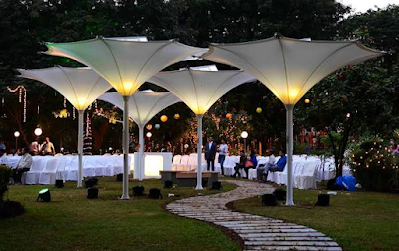Subramanya Bharathi
A Tamil writer, poet, journalist, Indian independence activist, a social reformer and a polyglot.
Great Tamil poet and nationalist Mahakavi Subramanya Bharathi was born on 11 December 1882 at Ettayapuram town in present-day Thoothukudi district of Tamil Nadu. He was born to Chinnaswamy Iyer and Lakshmi Ammal. He was called Subbiah in his childhood.
He started writing poetry in Tamil at the tender age of seven. At the age of 11, he won a debate in the court of Ettayapuram Raja and was bestowed the title ‘𝐁𝐡𝐚𝐫𝐚𝐭𝐡𝐢’ (meaning blessed by Goddess Saraswati) since he impressed all the eminent men present in the court with his intellect and erudition.
At the age of 15, he spent 2 years in Banares and learnt Sanskrit, English and Hindi there. His stay in Banares changed his outward appearance. He started growing a beard and wore a turban. He also gained a bold swing in his gait. It was in Benares that Bharathi was exposed further to Hindu spirituality and the idea of nationalism. He also attended Congress sessions.
He worked as an editor of magazines and newspapers. He also contributed to these journals. His poems and hymns were based on diverse themes like patriotism, relationship between man and God, Russian and French revolutions, children, devotion, etc. These magazines included 𝐒𝐰𝐚𝐝𝐞𝐬𝐡𝐚𝐦𝐢𝐭𝐫𝐚𝐧, 𝐈𝐧𝐝𝐢𝐚 and 𝐁𝐚𝐥𝐚 𝐁𝐡𝐚𝐫𝐚𝐭𝐡𝐚𝐦.
At the historic Surat session of the Congress in 1907 when the party split into extremists and moderates, Bharathi sided with Bal Gangadhar Tilak and supported armed resistance against the authorities.
In 1908, Bharathi fled to Pondicherry, then under the French, when faced with the prospect of arrest owing to his writings in ‘𝐈𝐧𝐝𝐢𝐚’. In Pondicherry, he edited and published journals '𝐈𝐧𝐝𝐢𝐚', '𝐕𝐢𝐣𝐚𝐲𝐚', '𝐁𝐚𝐥𝐚 𝐁𝐡𝐚𝐫𝐚𝐭𝐡𝐚𝐦' 𝐚𝐧𝐝 '𝐒𝐮𝐫𝐲𝐨𝐝𝐚𝐲𝐚𝐦'. In 1909, the British government banned ‘𝐈𝐧𝐝𝐢𝐚’ and ‘𝐕𝐢𝐣𝐚𝐲𝐚’ in India.
Bharathi also met great leaders like Aurobindo, Lala Lajpat Rai and V V S Aiyar while in Pondicherry. He started learning Vedic literature here. He translated Vedic hymns, Bhagavad Gita and Patanjali’s Yoga Sutra into Tamil. In 1918, when Bharathi entered India, he was arrested. He was released after 3 weeks following the intervention of Annie Besant and C P Ramaswamy Aiyar. In 1920, he resumed being the editor of Swadeshamitran in Chennai. He spent the last few years of his life in Triplicane, Chennai.
Subramanya Bharathi was an advocate of women’s rights and also against the caste system. According to him, Indian society would have to be united before being liberated from foreign rule. He condemned certain Shastras that denigrated women. He believed in the equality of humankind and criticised many preachers for mixing their personal prejudices while teaching the Gita and the Vedas.
He is considered the foremost poet in not only modern Tamil language but in all of Tamil history. He is widely regarded as the pioneer of modern Tamil literature. He used simple but effective words and rhythm. As a poet, his themes ranged from patriotism to nature, from romance to philosophy, from devotion to self-respect.
He also wrote of the need for scientific advancements if the country was to move ahead. His famous poems include 𝐀𝐜𝐡𝐚𝐦𝐢𝐥𝐥𝐚𝐢 𝐀𝐜𝐡𝐚𝐦𝐢𝐥𝐥𝐚𝐢, 𝐒𝐮𝐭𝐭𝐮𝐦 𝐕𝐢𝐳𝐡𝐢𝐜𝐡𝐮𝐝𝐚𝐝𝐚𝐫, 𝐀𝐠𝐧𝐢 𝐒𝐭𝐡𝐨𝐦𝐚𝐦, etc. He was a polyglot and translated the speeches of Aurobindo, Swami Vivekananda and Tilak into Tamil.
His poems have and continue to inspire millions of people around the globe. He is fondly called ‘𝐌𝐚𝐡𝐚𝐤𝐚𝐯𝐢’ or ‘𝐆𝐫𝐞𝐚𝐭 𝐏𝐨𝐞𝐭’. Bharathi was struck by ill-health due to his arrests. He passed away on 11 September 1921 aged just 38. In 1949, he became the first poet whose works were nationalised by the state government.


















